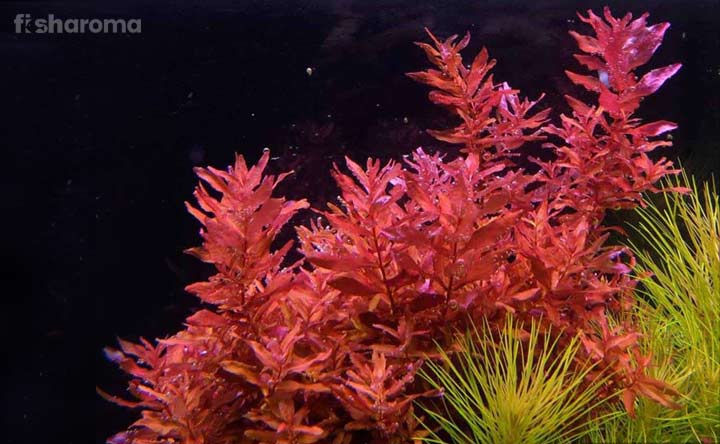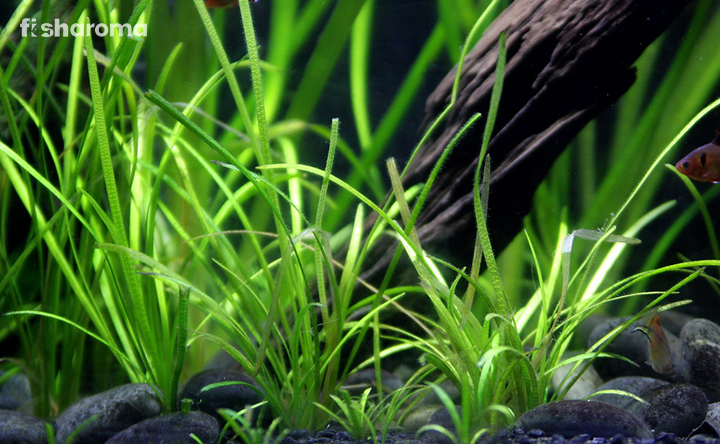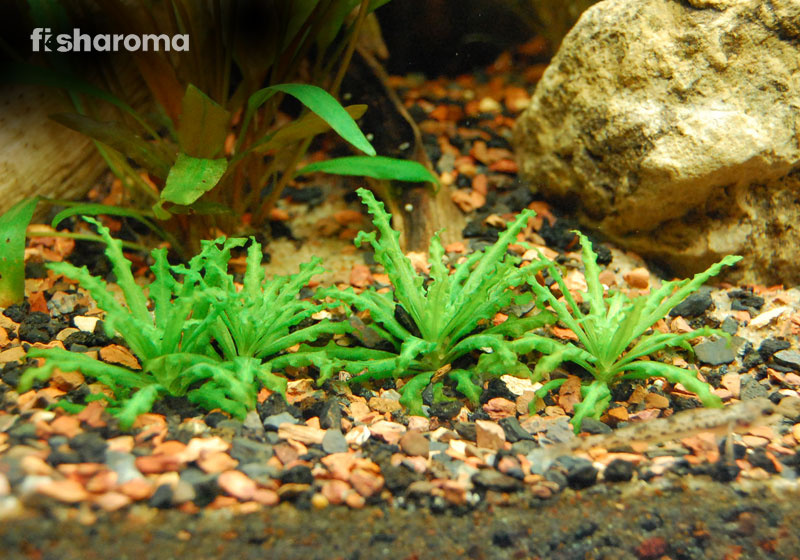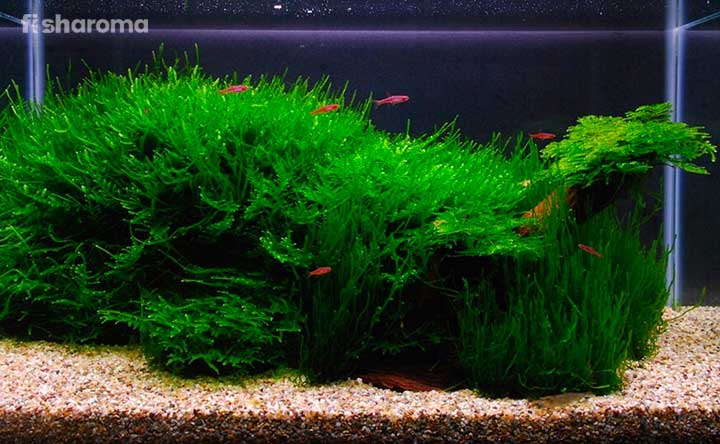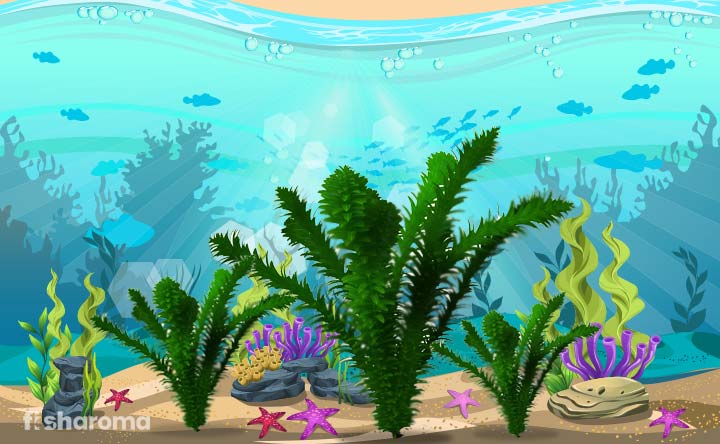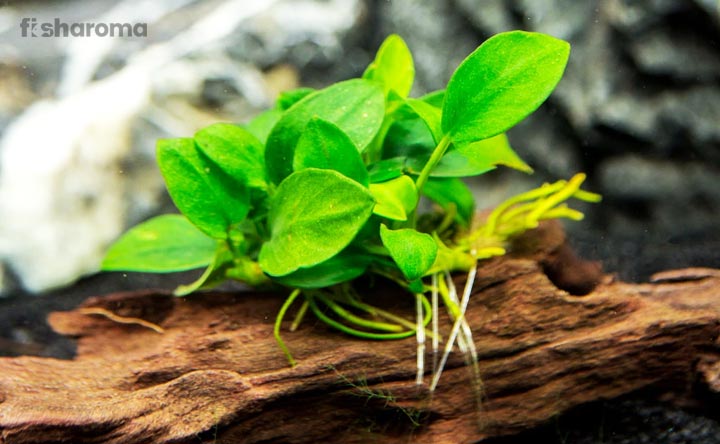Java Fern – The Complete Care Guide to Take Care of the Plant

- Origin of Java Fern
- Java Fern Appearance
- How to Plant Java Fern
- How to Take Care of Java Fern
- Tank Requirements for Java Fern
- Water Type for Java Fern
- Reproduction and Propagation of Java Fern
- Appropriate Tankmates and Compatibility of Java Fern
- Major Problems to Keep Java Fern
- Types of Java Fern Plants
Fish hobbyists find new ways to decorate their aquarium for the peace of their pet fish, and also for the beauty of the fish home. If you are one of the decoration-lovers and want to beautify the tank with green herbs, then why don’t you add Java Fern to your aquarium? Beginner aquarists like to plant ferns in their fish tank because of its slow growth and mesmerizing shape.
However, before you are planning this aquatic plant, try to get ample information about its care and maintenance because every plant has specific requirements and propagation.
Quick Details about Java Fern
You may get some ideas by having a short look at the table:
| Scientific name | Microsorum pteropus |
| Family | Polypodiaceae |
| Plant Size | 13.5” (33.5 cm) |
| Tank size | 10 Gallons |
| Growth Rate | Low to Moderate |
| Care Level | Easy |
| Lighting | Low to Medium |
| Water Conditions | 68-82°F (16-17 °C), pH 6.0-7.5, KH 3-8 |
Overview
Java Fern has more than fifty species of sixty different genera in the Polypodiaceae family. This wild plant of forest freshwater grows on the waterline of the streams and waterfalls. Moreover, you can also find Fern plants growing on the rocks under the river water. These plants grow both in full and partially submerged condition.
If you wish to buy this aquatic plant for your fish tank, then you will get it at a very reasonable price of $4-$5. Try to buy a 3”-5” plant for your aquarium if there is less space in your fish home. But choose a healthy plant with no brown-edging.
Java Fern is a floating and hardy plant and doesn’t need much CO2 and sunlight to survive.
Origin of Java Fern
Located in South East Asia, this amphibious wild beauty is found in the tropical rivers of China, Northeast India, Japan, Thailand, and Malaysia. You will find this water plant and other fern trees in the hilly areas and mountain streams. People not only collect this plant for its looks but also for the broad-shading leaves that give shelter to the fish and other water species.
Java Fern Appearance
This traditional aquarium plant has strong roots and broad leaves, which are the main two beneficial parts for the water species in the tank. You will find the velvety leaves of this plant is hardy, and it is not easy for any fish to tear, eat or damage the leaves. The juvenile size of this aquatic plant is 6”-8” and its length can increase to 13.5”. There is a pointed tip on the top-most part of the leaves of this plant, but no need to worry because the leaves are not sharp, they will not harm your little pet fish.
How to Plant Java Fern
This Asian plant is the best aquatic herb to be kept in a fish tank because of the easy breeding and moderate care requirement, although there are some necessary things that you need to know for planting this fern plant.
Attach the Fern Plant to the Driftwood to Keep it in a Tank
You can buy this plant from a plant pet store. Usually, they are available in a bunch but you can attach these plants to driftwood to keep it in your aquarium. The roots of this plant will simply take its place at the driftwood. If the fern is not attached then let it float freely, but secure the rhizome with plastic ties or thread.
Plant the Java Fern at the Middle or at the Background of the Aquarium
After attaching the plant on the driftwood with a glue gel, place this fern plant at the middle or background of the tank because it may showcase the beauty of the tank with its appearance. There will be no problem if it is placed in the middle of the tank because it is not a very bushy plant, so there is no chance of overcrowding.
Never Plant Java Plant in the Substrate
If you bury this plant on the soil and the roots are not exposed then the rhizomes may get damaged, which will result in the death of the plant.
How to Take Care of Java Fern
You don’t need much effort and hard work to take care of Java Fern. Just know the nutrient requirements, and some basics to take care of this beginner-friendly plant with the help of the care guide given below:
You can follow these tips to take care of this freshwater plant while captivating it in your aquarium of home and office:
- Add liquid plant fertilizer like Aquatic Remedies K++ Potassium Manganese Calcium Aquarium Plant Fertilizer in the fish tank for the proper growth and nourishment of the plant.
- Adjust the brown rots of the plant by trimming them, just to avoid infections and plant illnesses.
- Pluck off the relocated plants with the fern plant for its proper growth.
- Also, try to trim down the leaves whenever it grows large.
- Pluck out the dead leaves from the plant.
- Clean the leaves of this plant by swiping them with a clean cloth to dust out the dirt; remove the algae which can damage the plants and create dirt in the aquarium.
Tank Requirements for Java Fern
Java Fern prefers natural climate, so it grows alongside the streams and also found floating on moving water. So, you also need to set a tank in such a way that helps this plant to grow and dwell comfortably.
Like the water species, plants also need a good place to grow, so they have some requirements. Let’s have a look at a few tank requirements of this plant:
Tank Size
You need a 10-gallon aquarium for the proper growth of this aquatic herb.
Lighting
The light of the tank should be medium with 1.5/2 watts. Use 5000-7000K bulbs for the aquarium where you will keep this aquatic plant.
Filter
Arrange a good sponge filtration system in the tank of Amazon Sword Plant because it will help in killing the bacteria and washing the pollutants of the water which can harm the fish and the aquatic plants.
Water Type for Java Fern
Water is the main thing that helps in growing an aquatic plant like Java Fern. Therefore, follow some necessary things for the maintenance of the plant.
Temperature
The temperature of the water for Java Fern should be 68-82°F (16-17 °C).
pH Level
The pH level of the water should be between 6.0-7.0.
Hardness
You need to arrange soft acidic water for their upkeeping. So, the hardness should be 3-8 dGH.
Replacement Process
Try to change about 20-25% of the water from the tank once in a month, and if you want to change it weekly then about 15% of water can be replaced by checking the temperature.
Reproduction and Propagation of Java Fern
It does not require any special condition for propagating Java Fern. The aquarists need to cut the rhizome of this aquatic plant into a few sections. Now, wait for the plant to develop tiny ferns on its leaves. It is also noticed that black spots are found on the underside of the leaves.
After over 2-3 weeks, some tiny leaves start to sprout out from the black bumps, and they can easily cut off with sterilized or sharp scissors when the aquarists want to move the plant to somewhere else for its new growth. The growth process gets started again as soon as the plantlets develop.
Java Fern can also survive in brackish water for a specific timeperiod.
Appropriate Tankmates and Compatibility of Java Fern
It is compatible with various fish and water species. Still, there are some special tankmates and plant companions of this herb. Let us have a look at their names:
Compatibility
Some plant companions of this plant are:
- Anubias
- Java Moss
Fish Tankmates
There are some small and large fish who like the ambiance of Java Fern as follows:
- Cichlids
- Catfish
- Tiger Oscars
- Arowanas
If you want to maintain the plant properly then do not keep herbivores fish who can consume the leaves of this plant. Moreover, avoid keeping aggressive fish in the aquarium who can damage the weak roots of this plant.
Major Problems to Keep Java Fern
Beginners may think that it is easy to plant Java Fern in an aquarium, but there are a few common problems which we cannot overlook.
- If you place this plant in soil or substrate, then it may die just in a few days.
- You will never find a plant growing rapidly in the first few weeks, so you need to keep patience.
- Too much sunlight is not good for this plant, and algae problem will also be the major issue. So, keep the plant under the sunlight for 5-6 hours a day.
- You cannot put the light of the fish tank on when you find the black circles on the leaves, which are the sign of new leaflets because the light can burn the young leaflets.
- Make sure that enough nutrients like AquaBloom and fertilizers to the sensitive plant are given to prevent it from rotting and melting.
None of these problems will remain if you follow the care tips to maintain this aquatic beauty, Java fern.
Types of Java Fern Plants
There are different variants of Java Fern which you can keep in your aquarium. You will just find a petite difference in them as follows:
- Narrow-Leaf Java Fern – The leaves of this plant are narrower than a simple fern plant.
- Windelov Java Fern – The finely-branched leaf tips of this plant grow up to 8” (20 cm), it is a very adjustable aquatic plant with various water species.
- Needle-Leaf Java Fern – The leaves of this plant are thinner in the shape of the needle and smaller than the regular Java Fern. Similar to other Ferns, this plant also needs to be attached in driftwood.
- Trident Java Fern – The feathery-lobed leaves of this fern plant are shorter in size as compared to other aquatic plants. Compared to other plants, it grows quicker in the shape of a fork.
Interesting Facts about Java Fern
- Java Fern has a fibrous root, which can easily absorb the nutrients and water required for its successful growth.
- You will not find flowers and seed in this plant because it grows from the leaves and stems.
- Fern plants have the capacity to reproduce leaves and rhizome.
- In the wild river, Ferns can live about 4000 years.
- This plant is hardly resistant to absorb metals from the soil, water, and air.
Acquire Information about Some Beginner-Friendly Plants of Aquarium
Along with this beginner-friendly plant – Java Fern, there are many other plants that are easy to propagate. You may get knowledge about those aquatic plants before keeping it to your aquarium.
- Amazon Sword Plant: This common freshwater plant is the best beginner-friendly herbs to be kept in a fish tank. The dense and bushy leaves of this plant act a serene shade and hiding place for the fish. Moreover, beginners like this plant because it is easy to care and maintain.
- Anacharis: This long and slender plant is also liked by the aquarists because of its beginner-friendly and much-adjustable nature with different tankmates.
- Water Wisteria: Compared to other aquatic plants, Water Wisteria grows more quickly and don’t need much hard effort to upkeep its roots and stems. So, the novice aquarists prefer choosing this plant for their aquarium.

